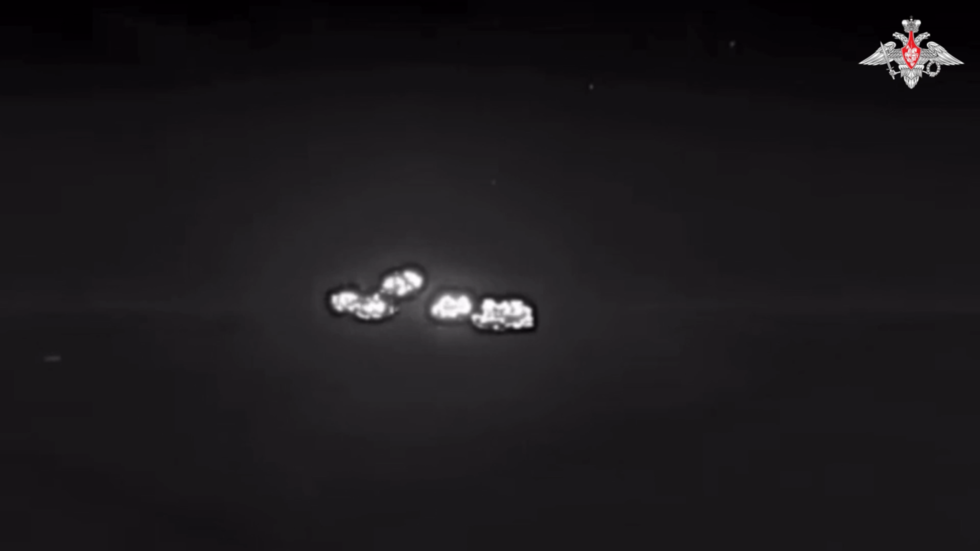Unleashing the Inferno: Russian Flamethrowers Target Ukrainian Strongholds
In a dramatic display of military might, Russian forces have turned to flamethrowers in their relentless assault on Ukrainian positions. This striking MOD video captures the intensity of warfare and raises questions about the evolving tactics on the battlefield. The use of flamethrowers, a weapon that conjures images of World War II, highlights a return to more brutal forms of conflict, where the psychological impact on both soldiers and civilians cannot be overstated.
Understanding the Role of Flamethrowers in Modern Warfare
Flamethrowers, while often viewed as relics of the past, have found a renewed place in modern warfare. These weapons project a stream of fire, capable of incinerating everything in their path. The recent uptick in their use by Russian forces has not only shocked observers but has also prompted military analysts to reconsider their effectiveness and implications in contemporary conflicts.
The Mechanics of Flamethrowers
Flamethrowers work by using pressurized gas to propel a flammable liquid, which is then ignited at the nozzle. This creates a wide-reaching cone of fire, which can effectively target entrenched positions and enemy fortifications. Their primary advantages include:
- Area Denial: They can create a barrier of fire, dissuading enemies from advancing or retreating.
- Psycho-Emotional Warfare: The terrifying nature of fire can lead to panic and demoralization among troops.
- Destruction of Cover: Flamethrowers can eliminate cover provided by buildings, foliage, or other structures.
The Tactical Shift in the Ukrainian Conflict
The incorporation of flamethrowers into Russian military tactics represents a significant shift in how both sides are approaching the ongoing conflict in Ukraine. While traditional artillery and drone strikes have dominated the battlefield, the use of flamethrowers suggests a move towards more direct, visceral engagements.
Implications for Ukrainian Defense
For Ukrainian forces, the emergence of flamethrowers poses new challenges. Defensive strategies that rely on fortifications and cover must now account for the devastating effects of fire. The psychological toll on soldiers facing such weapons can be profound, leading to increased stress and trauma.
Moreover, the targeting of civilian areas and infrastructure with flamethrowers raises serious humanitarian concerns. The potential for collateral damage increases, prompting international scrutiny and calls for adherence to the laws of war.
The Human Cost of Flamethrower Warfare
One of the most troubling aspects of employing flamethrowers in combat is the inhumanity associated with their use. The horrific injuries caused by fire can leave lasting scars—both physical and psychological. Survivors of flamethrower attacks often endure severe burns, disfigurement, and trauma, necessitating extensive medical treatment and rehabilitation.
International Humanitarian Law and Flamethrowers
International humanitarian law seeks to limit the effects of armed conflict, protecting those who do not participate in hostilities. The use of flamethrowers raises complex legal questions. While not explicitly banned, their deployment is subject to the principles of distinction, proportionality, and necessity. The targeting of civilian areas with such weapons could be viewed as a violation of these principles, potentially leading to war crimes accusations.
Technical Developments and Future Trends
The resurgence of flamethrowers in the battlefield may influence future military technology. As nations observe the effectiveness of these weapons in urban warfare, there may be a renewed interest in developing more advanced systems. Future flamethrowers might incorporate enhanced targeting systems, increased range, and improved safety measures for operators.
Countermeasures Against Flamethrowers
As flamethrowers become more prominent, there will also be a need for countermeasures. Military strategists are likely to explore various methods to mitigate the effects of this weapon:
- Improved Protective Gear: Developing flame-resistant uniforms and equipment for soldiers.
- Enhanced Fortifications: Reinforcing positions with materials that can withstand fire.
- Psychological Training: Preparing troops mentally to cope with the fear elicited by flamethrowers.
The Broader Impact on Global Military Strategy
The deployment of flamethrowers by Russian forces may not only affect the Ukrainian conflict but could also reshape global military strategies. Nations observing this tactic might consider re-evaluating their own arsenals and training regimens, leading to a potential arms race in incendiary weapons.
Public Perception and Media Influence
The portrayal of flamethrowers in the media also plays a significant role in shaping public perception of the conflict. Graphic images and videos can elicit strong emotional responses, influencing public opinion and policy decisions. The ethical implications of showing such violence are hotly debated among journalists and media outlets.
Conclusion: A New Era of Warfare
The use of flamethrowers by Russian forces against Ukrainian strongholds marks a troubling development in modern warfare. As military tactics continue to evolve, the implications of such weapons extend beyond the battlefield. They challenge the moral framework governing armed conflict and raise critical questions about the humanitarian consequences of warfare.
As we move forward, it becomes increasingly essential for the international community to address the use of incendiary weapons and advocate for regulations that protect both combatants and civilians. While military might may dominate the headlines, the human cost of conflict remains the most pressing concern that demands our attention and action.
See more CNN Headline


